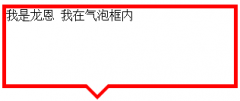十步教会你css怎样布局 (英文)
不给大家翻译了!懂英文的应该能看懂! This tutorial examines the different layout properties available in CSS: position:static, position:relative, position:absolute, and float. 1. position:static The default positioning for
不给大家翻译了!懂英文的应该能看懂!
This tutorial examines the different layout properties available in CSS: position:static, position:relative, position:absolute, and float.
1. position:static
The default positioning for all elements is position:static, which means the element is not positioned and occurs where it normally would in the document.
Normally you wouldn't specify this unless you needed to override a positioning that had been previously set.#div-1 {
position:static;
}
2. position:relative
If you specify position:relative, then you can use top or bottom, and left or right to move the element relative to where it would normally occur in the document.
Let's move div-1 down 20 pixels, and to the left 40 pixels:#div-1 {
position:relative;
top:20px;
left:-40px;
}
Notice the space where div-1 normally would have been if we had not moved it: now it is an empty space. The next element (div-after) did not move when we moved div-1. That's because div-1 still occupies that original space in the document, even though we have moved it.
It appears that position:relative is not very useful, but it will perform an important task later in this tutorial.
3. position:absolute
When you specify position:absolute, the element is removed from the document and placed exactly where you tell it to go.
Let's move div-1a to the top right of the page:#div-1a {
position:absolute;
top:0;
right:0;
width:200px;
}
Notice that this time, since div-1a was removed from the document, the other elements on the page were positioned differently: div-1b, div-1c, and div-after moved up since div-1a was no longer there.
Also notice that div-1a was positioned in the top right corner of the page. It's nice to be able to position things directly the page, but it's of limited value.
What I really want is to position div-1a relative to div-1. And that's where relative position comes back into play.
第 1 2 3 页
This tutorial examines the different layout properties available in CSS: position:static, position:relative, position:absolute, and float.
1. position:static
The default positioning for all elements is position:static, which means the element is not positioned and occurs where it normally would in the document.
Normally you wouldn't specify this unless you needed to override a positioning that had been previously set.#div-1 {
position:static;
}
2. position:relative
If you specify position:relative, then you can use top or bottom, and left or right to move the element relative to where it would normally occur in the document.
Let's move div-1 down 20 pixels, and to the left 40 pixels:#div-1 {
position:relative;
top:20px;
left:-40px;
}
Notice the space where div-1 normally would have been if we had not moved it: now it is an empty space. The next element (div-after) did not move when we moved div-1. That's because div-1 still occupies that original space in the document, even though we have moved it.
It appears that position:relative is not very useful, but it will perform an important task later in this tutorial.
3. position:absolute
When you specify position:absolute, the element is removed from the document and placed exactly where you tell it to go.
Let's move div-1a to the top right of the page:#div-1a {
position:absolute;
top:0;
right:0;
width:200px;
}
Notice that this time, since div-1a was removed from the document, the other elements on the page were positioned differently: div-1b, div-1c, and div-after moved up since div-1a was no longer there.
Also notice that div-1a was positioned in the top right corner of the page. It's nice to be able to position things directly the page, but it's of limited value.
What I really want is to position div-1a relative to div-1. And that's where relative position comes back into play.
第 1 2 3 页
- 上一篇:CSS制作网页时的优化与技巧
- 下一篇:利用条件注释制作下拉菜单
精彩图集
精彩文章



